This post is also available in: Italian
Sicily, rich in culture and beauty, looks magnificent in any season. There are many gardens, natural oasis, nature reserves, ancient towns, and breath-taking monuments blessed by the mild climate, even in winter. There are also many special nurseries, quite oddly scattered mostly along the northeastern area of the island. We have, therefore, divided them along two itineraries, the first around Messina, the ancient “Zancle” (also known as the “gateway to Sicily” – one of the Sicilian cities particularly rich in history, which used to compete with Palermo as the capital city between the late Middle Ages and the mid-XVII century), and the second running from Catania and the slopes of Mount Etna to Syracuse and Ragusa.
You will come across citrus fruits, pomegranates, capers, tree ferns, fragrant frangipani, tropical and subtropical plants, fruit varieties and spices. If you have the time, do please include a visit to some local gardens, nature reserves or any other special attractions mentioned in our itineraries.
And don’t forget to treat yourself to excellent Sicilian cuisine!
The second itinerary stretches to the nurseries along the East coast, from Catania to Ragusa (Sicilia/2), eventually reaching Sun Island, 24 miles from the last nursery of the first, current itinerary.
,
The nurseries
The map shows the nurseries and other locations included in our suggested itinerary. Distances are also mentioned, in order to make it easier and more practical for you to make your choice and save petrol and time.

Hortus Hesperidis Nursery, in Mazzarà Sant’Andrea (ME): Giuseppe Messina’s nursery is specialized in the production of citrus and olive trees, both edible and ornamental, and other Mediterranean plants. Citrus fruits, which mainly belong to the Citrus and Fortunella genera, include ancient and rare varieties, such as some with bizarre colours and shapes dating back to the 1600s.
Distances to other nurseries: 4,3 miles to Rosso Melograno – 52,8 miles to Limara Nursery – 9 miles to Piante Tropicali – 14,6 miles to Chersoneso – 18 miles to Torre Nursery – 55 miles to Esoticando.
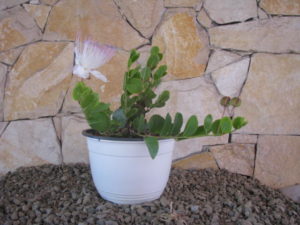
Rosso Melograno, in Verme Vigliatore (ME): this young Sicilian nursery is specialized in the cultivation of ornamental pomegranate and caper plants, using innovative and environment-friendly techniques. Pomegranates (Punica granatum) are available in different shapes and sizes. Capers (Capparis sativa) are typical cultivations of the Mediterranean area and, in particular, of the Aeolian Islands; from May to September the plant bears buds, flowers and fruits at the same time. The capers are the actual buds. If left to blossom, they turn into fruits, also used for food preparation and locally called “cucunci”.
Distances to other nurseries: 1,8 miles to Limara Nursery – 4,3 miles to Hortus Hesperidis – 4,6 miles to Piante Tropicali – 10,2 miles to Chersoneso – 13,6 miles to Torre Nursery – 46 miles to Esoticando.
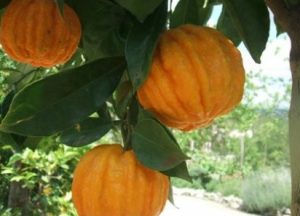
Limara Nursery, in loc. San Biagio, Terme Vigliatore (ME): Limara Nursery, by Francesco Genovese, is specialized in the production of forgotten varieties of ancient fruits, tropical fruits and historical citrus fruits, especially focused on Sicilian essences, as well as ancient and modern collectable species of roses.
Distances to other nurseries: 2,8 miles to Piante Tropicali – 5,3 miles to Hortus Hesperidis – 1,9 miles to Rosso Melograno – 8 miles to Chersoneso – 11,8 miles to Torre Nursery – 44,4 miles to Esoticando.
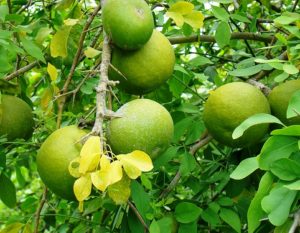
Piante Tropicali, in Barcellona Pozzo di Gotto (ME): Fabio Maio’s nursery is specialized in the cultivation of tropical and subtropical plants; it offers fragrant flowers, aromatic spice plants, fruit plants, climbing plants, palm trees, ornamental species, unusual and curious varieties.
This nursery features some collections of more than 100 cultivars of Plumeria and bromeliads, and over 120 species and cultivars of tropical plants. The latter endeavour is the result of careful research and experimentation.
Distances to other nurseries: 6,8 miles to Chersoneso – 9 miles to Hortus Hesperidi – 4,6 miles to Rosso Melograno – 2,8 miles to Limara Nursery – 7 miles to Torre Nursery – 42,2 miles to Esoticando.

Chersoneso Piante, in Milazzo (ME): this nursery is owned by Tommaso Sgrò and specialized in the production of frangipani (Plumeria spp.), with different species and about 300 different varieties of red pauciman (Plumeria rubra). Chersoneso nursery also offers small trees of subtropical origins which have been cultivated in some areas of Sicily for centuries and feature extremely fragrant flowers (white, yellow, pink, red, and orange, in dozens of different shades).
Distances to other nurseries: 1,8 miles to Torre Nursery – 14,6 miles to Hortus Hesperidis – 10,2 miles to Rosso Melograno – 8 miles to Limara Nursery – 6,8 miles to Piante Tropicali – 40,3 miles to Esoticando.
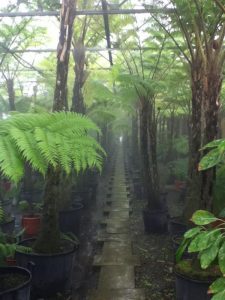
Torre Nursery, a Milazzo (ME): Torre nursery was established in 1945 by the agronomist and botanist Giancarlo Torre, together with his family, and thus safeguarding the legacy of three generations of nurserymen. Since then, the Torres have been involved in the research and introduction of plants from all over the world, as well as the selection of exotic fruit species that can be acclimatized and cultivated in this Mediterranean area, such as mango, avocado, chirimoya and lychee. The nursery also grows rare, peculiar, ornamental, and officinal species originating from tropical or subtropical climates while safeguarding the local biodiversity and the native species and local varieties. The spread of invasive species has always been kept under strict control.
Distances to other nurseries: 39,7 miles to Esoticando – 18 miles to Hortus Hesperidis – 13,6 miles to Rosso Melograno – 11,8 miles to Limara Nursery – 7 miles to Piante Tropicali – 1,9 miles to Chersoneso.
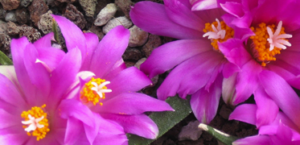
Esoticando, in Nizza di Sicilia (ME): Esoticando is a young nursery, born from the owner’s mother’s passion for succulent plant. It is, in fact, specialized in the production of Cactaceae and succulents, starting from seed up to wondrous specimens for indoor and outdoor environments.
Distances to other nurseries: 55 miles to Hortus Hesperidis – 46 miles to Rosso Melograno – 44,4 miles to Limara Nursery – 42,2 miles to Piante tropicali – 40,3 miles to Chersoneso – 40 miles to Torre Nursery.
Now you can proceed following our directions in the second Sicilian itinerary: DISCOVERING NURSERIES: FROM CATANIA TO RAGUSA (SICILIA/2), travelling to Sun Island, 24 miles from the last nursery of the first, current itinerary.
Gardens and Botanical Facilities
Orto botanico Pietro Castelli, in Messina: located in the city centre and covering about 2 acres with its lush vegetation, Pietro Castelli Botanical Garden is a small but enchanted arboretum. The particularly mild climate favours many exotic, tropical and subtropical species, which thrive in the open, without needing any protection in the winter. The history of this place is quite troubled and, in some respects, is intertwined with that of the University of Messina. The garden was established by the physician and botanist Pietro Castelli in 1638 – it was originally named “Hortus simplicium” or “Hortus messinensis” . This green facility was, nonetheless, suppressed together with the University, following the anti-Spanish revolt in 1678. Only the original layout of that naturalistic and architectural jewel has survived: a rectangular plan, divided into 14 sectors called “hortuli” and arranged by Castelli himself. In 1889, the Municipality of Messina gave some 10 acres to the University, to create a new botanical garden; in 1990, the Superintendency for Cultural and Environmental Heritage took control of the whole vegetable garden and placed a ban on any use other than the institutional one. Today, the Messina Botanical Garden organizes workshops for children. A barrier-free path for the blind has been recently built using 80 plants labelled with Braille tags and arranged in different themed areas.
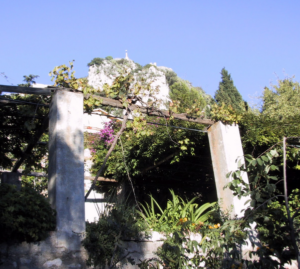
Casa Cuseni, in Taormina (ME): Casa Cuseni House, built in the early ‘900, stands in Taormina, close to the Rock of Casteltauro. Built by the English painter Robert Hawthorn Kitson, this Villa and its garden have been declared an Italian National Monument for their high historical and artistic value, thanks to the work of Kitson himself and his niece, the English writer Daphne Phelps.
Natural Reserves
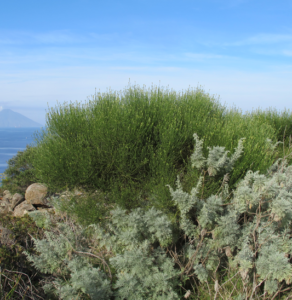
Panarea Nature Reserve: Panarea, a World Heritage Site acknowledged by UNESCO, is an Oriented Nature Reserve managed by the State Forests of the Sicilian Region. It covers some 840 acres and is the smallest of the Aeolian Islands – the archipelago off the north-eastern coast of Sicily. Densely populated and extensively cultivated until the middle of the last century, today it appears as a set of landscapes where spontaneous vegetation grows on stretches of terraced land abandoned in the 1950s and the 1960s, following massive emigrations. Thanks to an important intervention by Turin’s FAI (Italy’s National Trust) that keeps the paths clear of brambles and the Mediterranean scrub, Panarea can be visited and thoroughly explored on foot.
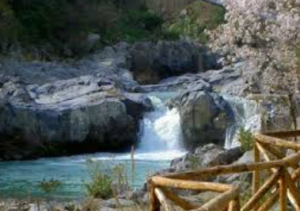
Alcantara River Park, Francavilla di Sicilia (ME): this river park was established in 2001 inside a former natural reserve and includes the part of the provinces of Messina and Catania that forms the basin of the Alcantara River; the park is actually located on the northern slope of the Etna Volcano, thus protecting and promoting the local natural environment. The territory crossed by the Alcantara River is of particular importance due to its morphology, which features the very shaping and engraving effects of the flowing water. The latter, for instance, created some impressive gorges among a series of lava flows in Fondaco Motta (in the Municipality of Motta Camastra): the Alcantara Gorges.
Accommodation
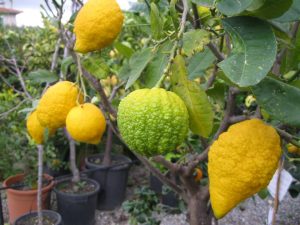
B&B Hortus Hesperidis, in Mazzara Sant’Andrea (ME): this nursery, specialized in ornamental and industrial citrus and olive trees, also features a nice and cosy B&B facility.
What to buy
Bronte Pistachios: the P.D.O. “Pistachio Verde di Bronte” relates to the Pistacia vera species (“Napoletana” cultivar, also called “Bianca” or “Nostrale”), grafted on Pistacia terebinthus. The village of Brondi thrives on pistachio grown among the steep climbs between Mount Etna and the Nebrodi Mountain Range. This species is locally grown, sold and used for creams and sauces.
This post is also available in: Italian


Leave a Reply